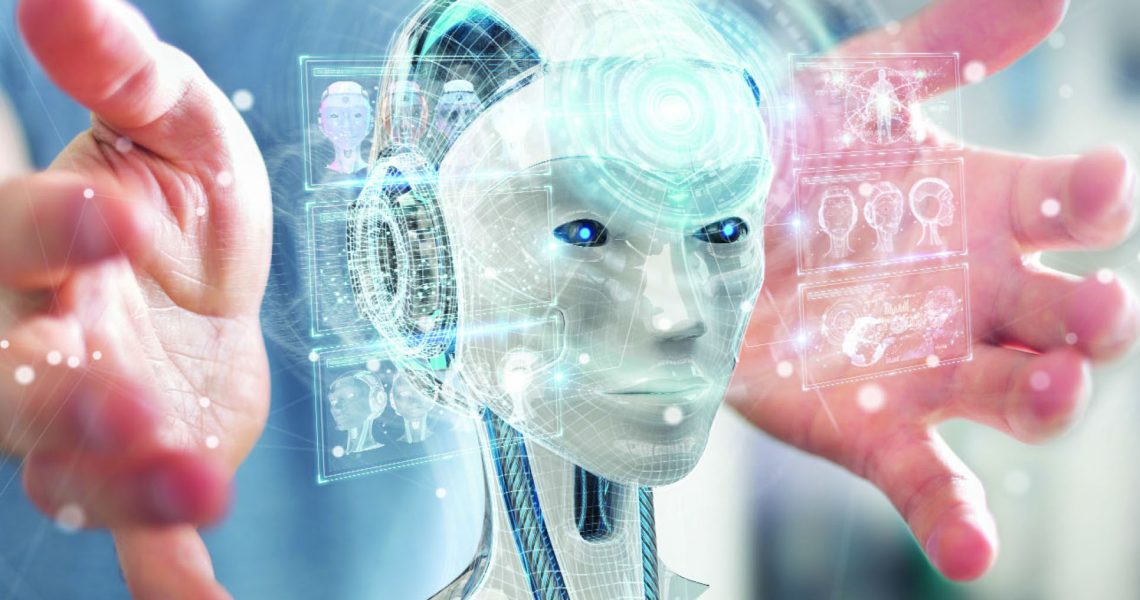AI can free customer service executives from routine support requests so that they can focus on complex tasks. Similarly, with its self-learning capability, it can resolve service issues before they arise, which could lower customer abandonment. These are few examples of the critical role it can play in any business environment
I nnovation is the only way to stay relevant in contemporary times. Hence, at the 13th edition of IIJS Signature 2020, GJEPC organised a Business Knowledge Forum powered by Economictimes.com. This platform offered valuable insights into emerging technologies in the digital world and highlighted how jewellers could use these to their advantage. Amongst the many experts at the Business Knowledge Forum was Animesh Samuel, cofounder of Light Information Systems and NLP Robots, who spoke on the theme ‘Reinvent with Artificial Intelligence (AI) and Machine Learning’. Here are excerpts from his presentation at the event:
EMERGENCE OF AI
During the Industrial Revolution, people transferred their physical powers to machines. This was followed by transference of computation powers where machines were taught to process information for faster results. Later, they were programmed to manage various repetitive jobs, so that they could achieve within minutes what humans would take days to do. Today, mankind is on the verge of technological breakthrough. Now that machines have taken care of physical, computational and automation attributes, it only lacked the ability to think. With AI, this absence has been fulfilled.
To understand how AI does this, let’s take the example of a single document and then extrapolate it to one lakh documents. A user can tag each document as either an invoice, receipt or certificate. This is called training data for the machine’s neural networks. So when a fresh document is added to its system, the machine will automatically tag it as either invoice, receipt or certificate, after assessing certain parameters, without human intervention.

According to the International Data Corporation (IDC) Worldwide Semiannual Cognitive Artificial Intelligence Systems Spending Guide, global spending on cognitive and AI systems is expected to continue its trajectory of robust growth as businesses invest in projects that utilise these capabilities.
According to the research agency, spending on cognitive and AI systems will reach $77.6 billion in 2022, more than three times the $24.0 billion forecast for 2018.
A BRIEF HISTORY OF AI
Contrary to popular notion, AI isn’t a new concept. It has been spoken about since the 1950s. Back then conversations revolved around cybernetics and early neural networks, Turing’s Test, Game AI, Symbolic reasoning and the Logic Theorist, though momentum was lost after 1956. From 1974 interest reawakened in reasoning as search and natural language. The period from 1980 to 1987 saw the rise of expert systems, the knowledge revolution and a revival of connectionism, before funding for these projects tapered off. The last decade of the century witnessed a lot more research on deep learning, Big Data and AI behind the scenes.
AI requires lots of data to operate. It might not always be perfect but it will selflearn to avoid repeating mistakes. It also requires tons of computational power to access various algorithms and take the right decision. More importantly, there are no formulae that apply to AI.
By 2020, 80% of all customers will be handled without a human agent, freeing this manpower for more critical work. AI, chatbots and automated self-service technologies free up call centre from routine tier-one support requests so they can focus on complex tasks. Additionally, resolving customer service issues before they arise could significantly lower customer abandonment.
Currently, this concept is taken a lot more seriously. One of the reasons is because increasing computational and computing prowess is readily available. The second is collaboration; today, more numbers of industries and companies are collaborating across continents. When these two elements are brought together, it means disruption is occurring at a phenomenal pace.
PUSHING THE FRONTIERS OF COLLABORATION
When Star Trek series burst on TV screens in 1966, the thought that people could communicate with each other across long distances using portable devices seemed fantastical. Today, though, we can freely video chat with anyone across the world. This unimaginable feat underlines that change is occurring at a fast clip. So, why is this happening now? The rapid adoption of AI-powered applications ais because of varied reasons. Firstly, 2.5 quintillion bytes of data is created daily, of which 80% is unstructured. This is especially in enterprises, which have systems like ERP, CRM, HRMS, etc. Identifying, classifying and then utilising this data for appropriate reasons is humanly impossible. However, AI can do it faster with better outcomes.
Additionally, availability of better hardware with faster chips for graphics processing units (GPUs) and tensor processing units (TPUs) is no longer a challenge. Secondly, there is constant innovation in algorithms that iteratively learn to enhance data that helps AI better predict outcomes. Thirdly, the proliferation of apps, systems and AI solutions has led to lowering of costs and improved savings for enterprises that are keen to deploy this technology. This, in turn, is encouraging them to create more use cases for AI-based solutions.
REIMAGINE EVERYTHING
AI has changed everything, compelling enterprises to reimagine everything. For instance, in the future when self-driving cars will become the norm, AI will take decisions for the driver. It will also know that it will have to steer clear from the driver ahead of vehicle. The reason? It has accessed his insurance records in real time and found the driver pounded his car five times in the past year! With the introduction of a 5G network, machines will be able to communicate with each other faster. In the gems and jewellery industry especially this will have several ramifications. For example, with 3D printing in the backdrop, manufacturers can use AI for making customised products at a faster pace.
Homosapiens have been around for approximately 5,00,000 years. And after all these years, renowned physicist Stephen Hawking noted that with AI, mankind is at the cusp of a revolution in its evolution. This shows the kind of revolution that AI can herald in the world, across various aspects, be it business or welfare.

ANIMESH SAMUEL
An alumni of St John the Baptist High School and Pune’s Fergusson College, Animesh Samuel completed his Bachelors in Mechanical Engineering from Kolhapur’s Shivaji University in 1999. He was always inclined towards technology from a young age and when he was just 25, he became CEO of Compulink India. A couple of years later, he joined Pune’s KAPS International LLC as Partner, where he offered corporate training, functional consulting and counselling to several leading corporations including Infosys and Cognizant Technology Solutions. In 2012, he co-founded Light Information Systems with an objective to transform man-machine interactions in the future by using AI and natural language processing. Its enterprise product, NLPBots automates conversations and processes in the areas of HR (employee engagement or hiring automation, etc.), customer care, marketing assist, reseller/partner management, technical support, lead generation, user validation processes, etc.










